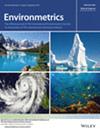Spike and Slab Regression for Nonstationary Gaussian Linear Mixed Effects Modeling of Rapid Disease Progression
Abstract
Select measures of social and environmental determinants of health (referred to as “geomarkers”), predict rapid lung function decline in cystic fibrosis (CF), defined as a prolonged decline relative to patient and/or center-level norms. The extent to which hyper-localization, defined as increasing the spatiotemporal precision of geomarkers, aids in prediction of rapid lung decline remains unclear. Linear mixed effects (LME) models with specialized covariance functions have been used for predicting rapid lung function decline, but there are few options to properly incorporate spatial correlation into the covariance functions while inducing simultaneous variable selection. Our innovative Bayesian model uses a spike and slab prior for simultaneous variable selection and offers additional advantages when coupled with nonstationary Gaussian LME modeling. This model also incorporates spatial correlation through an additional random effect term that accounts for spatial correlation based on ZIP code distances. We validated the model with simulations and applied it to real CF data from a Midwestern CF Center. We demonstrate how a combination of demographic, clinical, and geomarker variables can be selected as optimal predictors using Bayesian false discovery rate controlling rule. Our results indicate that incorporating spatiotemporal effects and geomarkers into this novel Bayesian stochastic LME model enhances the dynamic prediction of rapid CF disease progression.

 求助内容:
求助内容: 应助结果提醒方式:
应助结果提醒方式:


